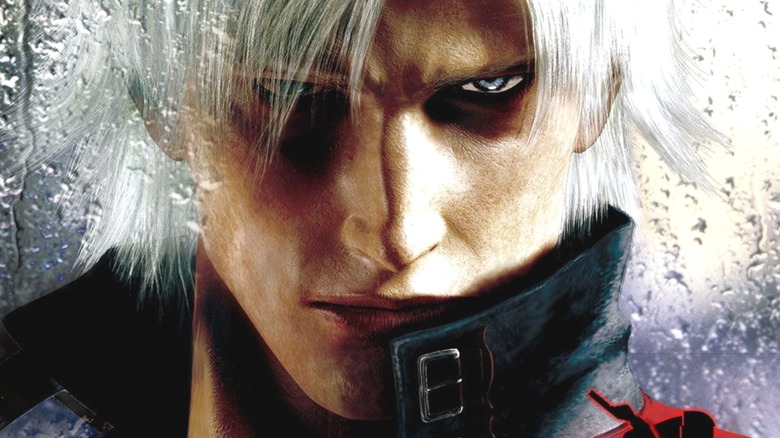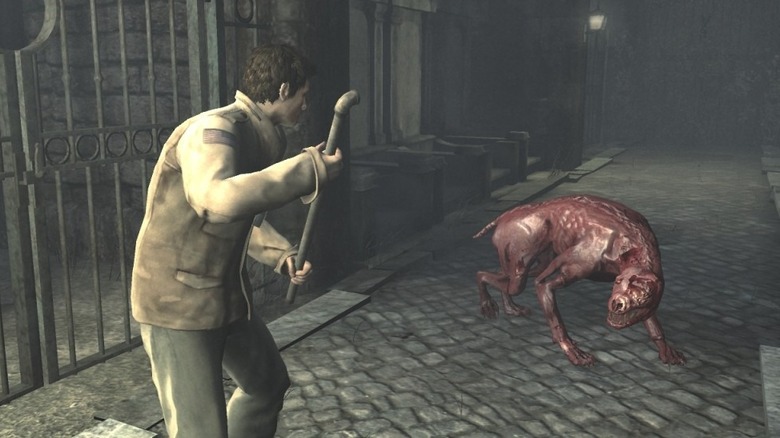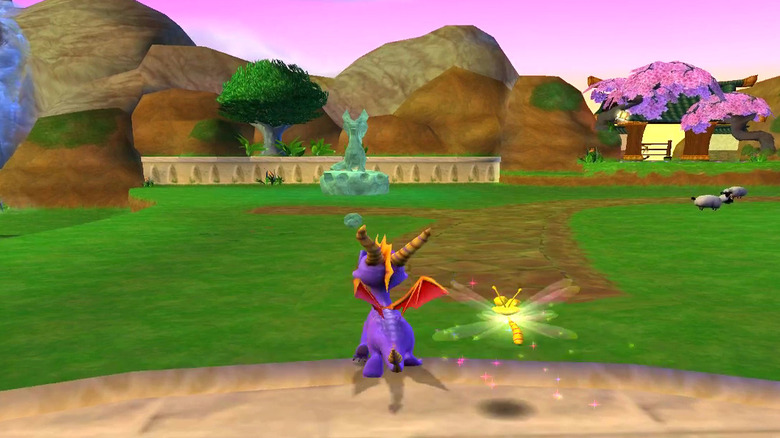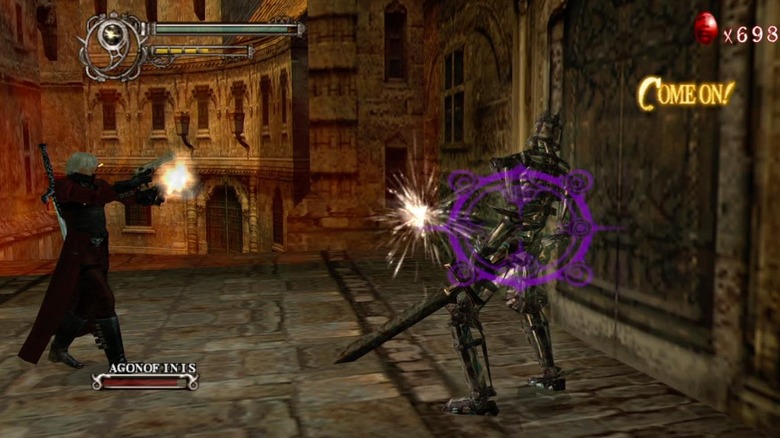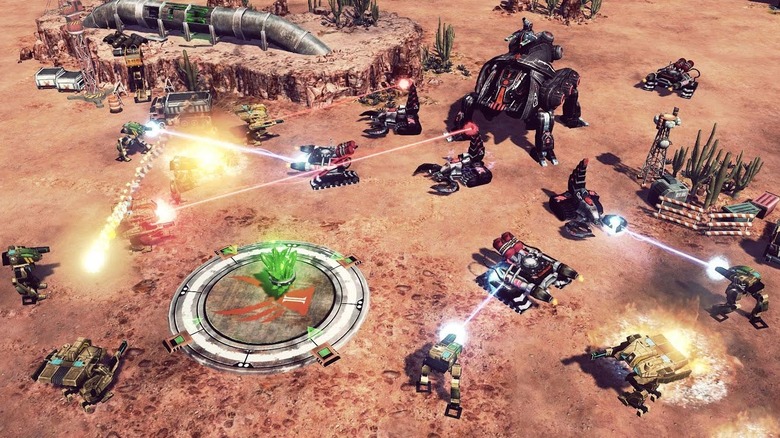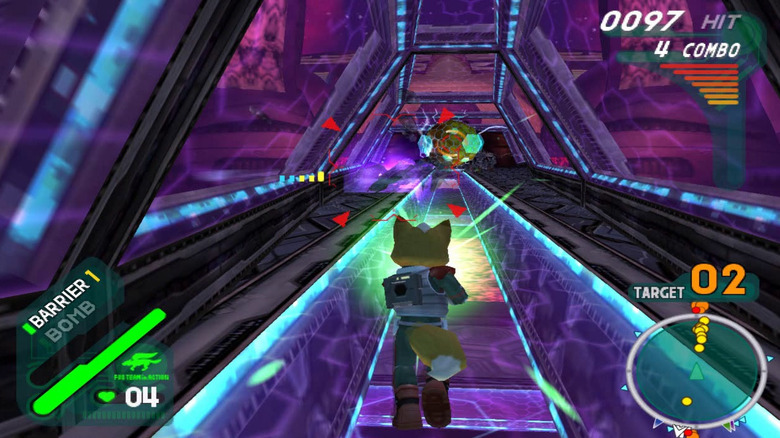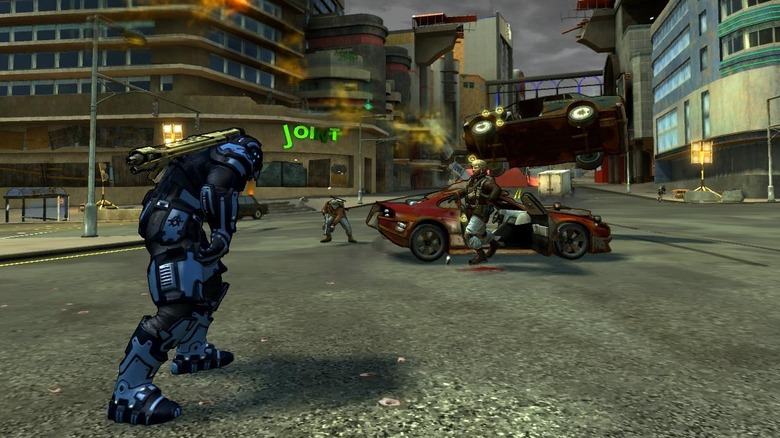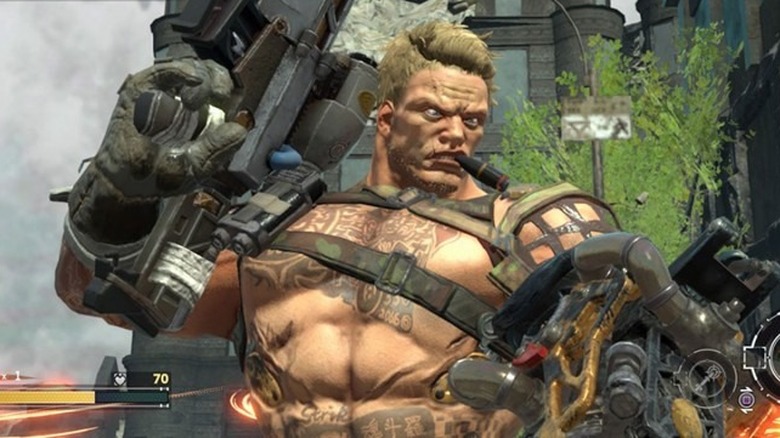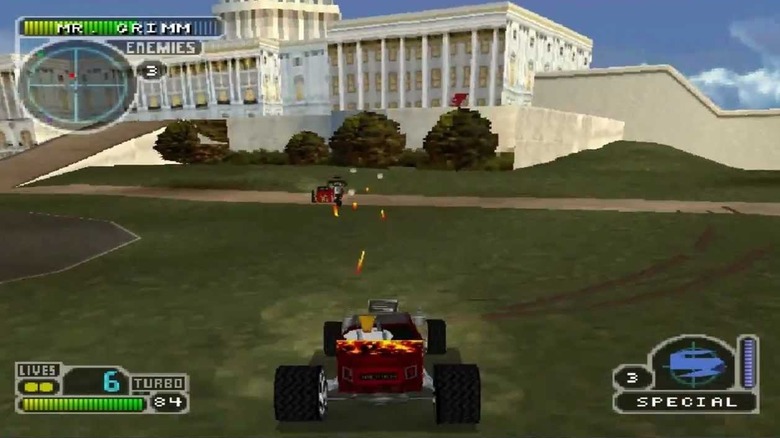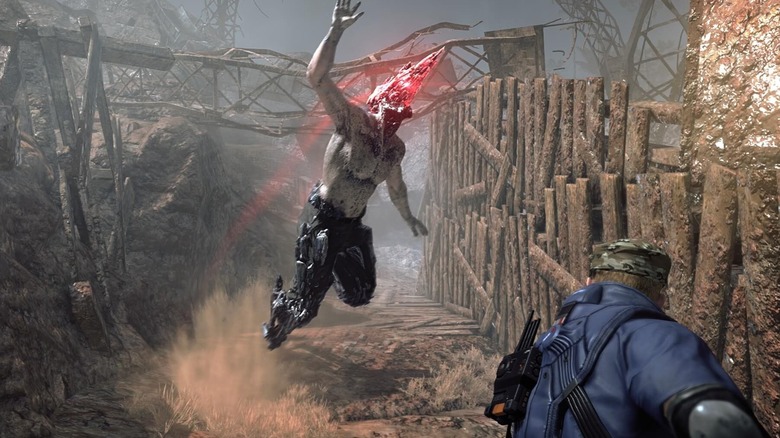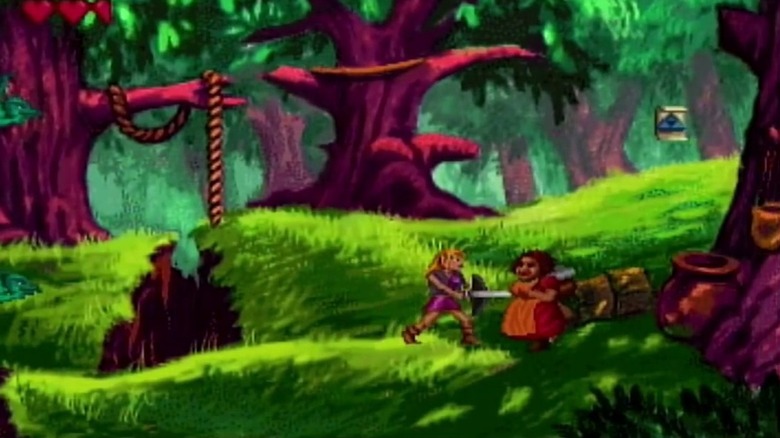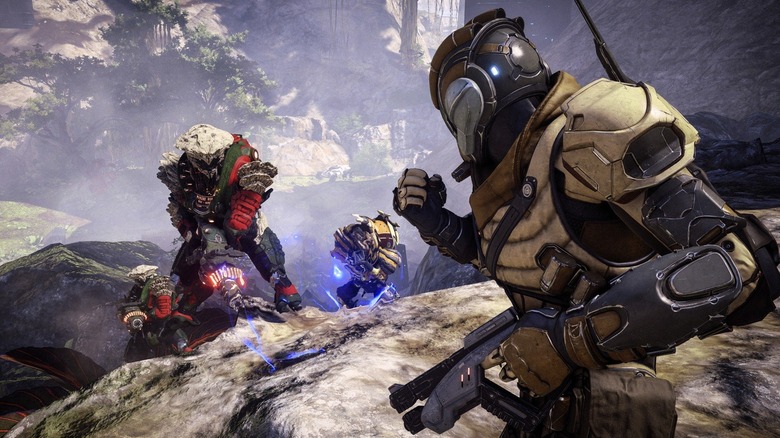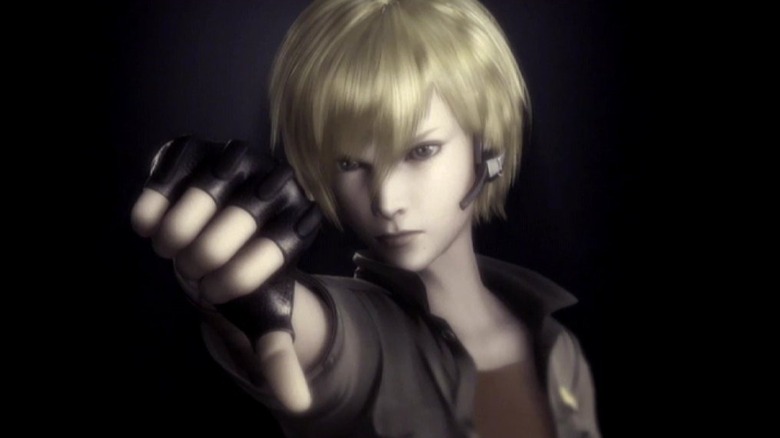Game Series That Were Ruined By Different Developers
It can be difficult to maintain quality from one entry to the next in a video game franchise, and that's even including series that have consistent creative teams. Things can get especially dicey when control of a franchise is handed off between entries.
To be fair, there have been plenty of game series that either stayed just as good or actually got better when they swapped developers. In some cases — "Tomb Raider," "Max Payne," and "Need for Speed," for example — a fresh take from a new dev team was exactly what was needed to revitalize an ailing or dormant franchise. But there are plenty of examples of a new team failing to recapture what the previous iterations had gotten right.
Some of the following franchises eventually returned to their former glory, but a few have yet to bounce back entirely. The gaming industry can be a pretty unforgiving place, and sometimes it only takes one bad entry to kill a series altogether. Luckily, that isn't the case for all of the franchises listed here, as that would've robbed fans of some all-time greats. And it should be noted that pretty much nobody sets out to make a bad game. Sometimes a creative team just isn't the right fit for a particular IP. With that in mind, here are some examples of changes in management that hurt some beloved titles.
Silent Hill
"Silent Hill 2" is still brought up in discussions about the best horror games of all time, as it continues to be a high water mark for how to mix psychological and survival horror. Remarkably, "Silent Hill 3" was also excellent, immediately following up one great entry with another. Not many trilogies can say that.
The fourth "Silent Hill" game, subtitled "The Room," was a bit more divisive. Still, it was generally well-regarded, even by those who didn't like all of the changes it made to the series' formula. But that's where things ended for the golden era of "Silent Hill," as it would mark the final game by Team Silent before the series was shopped off to various developers, beginning with 2007's "Silent Hill: Origins."
Reviews for "Origins" were decent, though nowhere approaching the level of praise that the earlier games got. Then came "Homecoming" and "Downpour," each more critically panned than the last. "Silent Hill: Shattered Memories" is an outlier of the post-Team Silent games and is generally considered by fans to be an underappreciated gem. Sadly, the parade of underwhelming spinoffs sent the franchise into hibernation for over a decade.
Konami finally announced the revival of "Silent Hill" in 2022, but it remains to be seen if the series has been truly saved.
Spyro
Before it was making award-winning "Spider-Man" games, and even before "Ratchet & Clank," developer Insomniac Games crafted an excellent trilogy of platformers for the PlayStation starring a cute purple dragon named Spyro. While the "Crash Bandicoot" games leaned into the PS1's perceived limitations by keeping players mostly on a fixed track (per Polygon), the "Spyro the Dragon" series proved that the console was more than capable of expansive 3D environments.
Eventually, Insomniac had to leave Spyro behind — just as Naughty Dog had to leave Crash behind — when it declined to continue working for the publisher, Universal (later Vivendi). Insomniac didn't own the "Spyro" IP and had to leave it with Vivendi, which in turn decided to keep making "Spyro" games with other studios (per IGN). The first post-Naughty Dog console "Crash" platformer, "Wrath of Cortex," was seen as a pretty decent effort, but 2002's "Spyro: Enter the Dragonfly" was a mess. On top of being something of a dull replica of the PS1-era games, it was littered with performance issues and numerous game-breaking bugs. GameSpot nominated it as one of the worst GameCube games of the year.
Devil May Cry
For 1999's "Dino Crisis," Capcom took the basic framework of "Resident Evil" — tank controls, static camera angles, and reliance on obtuse puzzle solving — and applied it to dinosaurs instead of zombies. The company did it again in 2001 with "Onimusha," creating a memorable samurai action title. Despite beginning development as a "Resident Evil" game (per IGN), "Devil May Cry" — also released in 2001 — essentially gave birth to a whole new genre of stylish action with its fluid movement and quick, flashy combat.
The game was such a hit that Capcom wanted a sequel ASAP. Rather than wait for the original crew to become available, the publisher put a completely different team on the project (per Eurogamer). The result was a troubled, rushed development cycle from many people who were working on a franchise they'd never worked on before. These factors showed in the unpolished "Devil May Cry 2," which lacked much of the charm of its predecessor while also having inferior graphics, lesser weapons, and an uninteresting combo system. This was a sophomore slump for the ages, no doubt about it.
But what makes "DMC2" unique among the games on this list is that, rather than bring the original team back to fix things, Capcom allowed much of the same team to use what they learned to make "Devil May Cry 3." That game, along with "Devil May Cry 5," both cracked the top five in IGN's list of the best action games of all time. In this case, the devs clearly got things figured out after a shaky start.
Command & Conquer
Electronic Arts has developed a reputation for shutting down studios — and it's not always newer or smaller developers, as evidenced by the company's 2003 shuttering of legendary Westwood Studios. Some publishers may think they can put any team on any franchise and have it work out, but what has happened to the "Command & Conquer" series since it left Westwood's hands seemingly disproves that theory.
In 1995, Westwood released the original "Command & Conquer," one of the pioneering titles of the entire real-time strategy genre, to critical acclaim. After a number of successful sequels and expansions over the years, Westwood even managed to do a commendable job at reinventing the franchise as a first-person shooter, as seen in 2002's decently-reviewed "Command & Conquer: Renegade." Unfortunately, the game apparently didn't perform to EA's liking. The publisher closed the studio and had the "Command & Conquer" series continue under different developers. Unfortunately, when looking at the entire series sorted by score on Metacritic, the Westwood originals are still the highest-rated by a long shot.
There have been a few decent entries post-Westwood, but things have largely been downhill for the series and the brand has arguably been diluted by the release of too many games in too short a timeframe. This is an unfortunate shift in quality for a series that really used to take its time.
Star Fox
After "Star Fox 64," Nintendo seemed to have gotten the idea that the company had done all it could do with the series' spacecraft combat and decided there was a need to spice things up. The fact that "Star Fox 64" remains the best-reviewed game in the series (with its more diverse entries not performing as well) would be to be at odds with that assumption.
The first time Fox and friends got their boots on the ground in a gameplay sense was in "Star Fox Adventures" for GameCube. This title was developed by Rare and used repurposed concepts from "Dinosaur Planet," an unfinished game the developer had intended to make for the Nintendo 64 (per VGC). This was the first "Star Fox" game that Nintendo passed from Nintendo EAD to another developer, and while it's generally considered a pretty decent "Zelda"-like, it arguably kicked off an identity crisis for the franchise that it has yet to recover from. Nintendo then commissioned Namco to follow it up with "Star Fox: Assault," which was met with slightly worse reception than "Adventures."
The best "Star Fox" games released since then have been either remakes ("Star Fox 64 3D") or reimaginings ("Star Fox Zero") of "Star Fox 64," which would seem to prove that the experimentations by Rare and Namco weren't the best fit for the series long-term.
Crackdown
If you don't know the name David Jones, you certainly know his work. He not only co-founded DMA Design Limited (which later became Rockstar North), but he was one of the main creative forces behind the first two "Grand Theft Auto" games (per IGN). Jones left the company during development of "GTA2" and his first major project afterwards was the conceptually similar "Crackdown," developed by Realtime Worlds in 2007. The game was a hit with critics and gamers alike, taking the aforementioned franchise's core of open world cops vs. robbers mayhem and adding superhuman agility and strength to the equation.
However, Jones left the series after the first entry, so Microsoft enlisted a new developer, Ruffian Games, to make "Crackdown 2." In his review for 1Up.com, Jeremy Parish summed up the general feeling of critics and gamers alike in regard to the game: "The best parts are those lifted straight from the first game, while all the new additions are annoying at best, infuriating at worst."
Nine years later, the series would finally return with "Crackdown 3." Despite the excitement of fans and the horsepower of the Xbox One, the sequel was once again cited as being more of the same, failing to do anything that the original hadn't already done better twelve years ago. The third game in the series failed to live up to its potential and subsequently bombed.
Contra
Konami's "Contra" series has always had its ups and downs — and many of the downs occurred when Konami enlisted an outside developer to work on the series. Now, it's worth pointing out that one of the better post-16-bit entries is "Contra 4" for Nintendo DS, which was developed by WayForward. However, every indisputably bad "Contra" game ever released has been made by a team outside of Konami.
The first of these was "Contra: Legacy of War." Released in 1996 for PlayStation and Sega Saturn and developed by Appaloosa Interactive, this entry tried to bring the series into 3D at a time when very few franchises were successfully making that transition. And like most games that weren't "Super Mario 64," it was ugly and hard to play. Undeterred, Konami gave Appaloosa another chance and let the studio also do the 1998 follow up, "C: The Contra Adventure." As noted by IGN's one-star review, it somehow managed to be even worse than "Legacy of War."
After taking a few years off and bringing things back in-house, "Shattered Soldier" for PS2 was a decent return to form for the series, which was then continued with the solid "Neo Contra" and the aforementioned "Contra 4." Konami once again contracted out a "Contra" game in 2019, but the result this time was the critically panned "Rogue Corps" from developer Toylogic. Yahtzee Croshaw of The Escapist would go on to name "Contra: Rogue Corps" as the worst game of that year.
Twisted Metal
On the PlayStation, the PlayStation 2, and the PlayStation Portable, "Twisted Metal" was one of the early defining experiences for each platform. In the case of the PS1, the original "Twisted Metal" was followed up by the excellent "Twisted Metal 2," a landmark multiplayer action title particularly in the console space.
Not unlike what happened with "Spyro," shifting business partnerships led to original "Twisted Metal" developer SingleTrac being separated from its franchise and Sony moving forward on a sequel with another developer. But SingleTrac was able to keep its game engine, using it for competing car combat game "Rogue Trip" for publisher GT Interactive, which meant new developer 989 Studios had to start from scratch with "Twisted Metal 3" (per PC World).
While SingleTrac had perfected the sweet spot of car combat gameplay, multiple reviews pointed out that 989 just didn't nail the physics. Joe Fielder of GameSpot made a point to mention in his review that "Rogue Trip" was the superior game, as did Game Informer, as it was no secret the two games were going to be directly compared. "Twisted Metal 4" was generally seen as a step in the right direction, but a baby step at best, on that wasn't totally fit to drive on the same road as the first two entries.
Luckily, Sony and the core creative team behind the original "Twisted Metal" games eventually reconnected for the fantastic "Twisted Metal: Black" on PS2 and the impressive "Twisted Metal: Head-On" for PSP.
Metal Gear
Despite ever-present rumors about remakes, the "Metal Gear" series has been put on a seemingly indefinite hiatus since the release of "Metal Gear Survive." The poorly-received entry tried to continue the series after the departure of creator and longtime director Hideo Kojima. "Survive" felt like a weak attempt to use the basic framework of "Metal Gear Solid 5" and shoehorn an online zombie survival game into it — a cocktail that didn't go down smoothly with many fans. A VGC report claimed that close to 70 people left Konami when Kojima did, many of whom had worked on previous "Metal Gear" games and "MGS5." So although some "Metal Gear" veterans may have worked on "Survive," it clearly wasn't many of them.
Of course, that wasn't the first time that "Metal Gear" struggled without Kojima's involvement. According to an interview with Kojima conducted by Gamers Today, Konami took it upon itself to make a sequel to the original "Metal Gear" without even telling the creator about it until it was already in production. That game — "Snake's Revenge" — is generally poorly-regarded and was subsequently deemed non-canonical to the series' overarching storyline.
On top of that, while it was generally liked at the time — especially in the U.S. — it has been argued that the NES port of the original "Metal Gear" was vastly inferior to the MSX2 original (as noted by VentureBeat). Once again, Kojima had zero involvement with that one.
The Legend of Zelda
It might seem like a no-brainer that only an in-house Nintendo team would know how to make a great "Zelda" game. But Flagship was the developer responsible for "Oracle of Seasons," "Oracle of Ages," and "Minish Cap," all three of which are positively regarded by fans and prove that an outside contractor can do right by the Hero of Hyrule.
The same can't be said for Animation Magic, the team that was tasked with creating two original "Zelda" games for the Philips CD-i console after Nintendo was essentially forced to sign a deal with Philips (per Nintendojo). Not only are "Link: The Faces of Evil" and "Zelda: The Wand of Gamelon" complete embarrassments to the franchise, but they are often considered two of the worst video games of all time. From the amateurish animation of the cutscenes to the broken gameplay, these two games seem like they were made under extreme duress by developers who were told to make the games as quickly as humanly possible.
Needless to say, any stain these games might have put on the franchise's reputation were quickly washed away. After all, the masterpiece that is "Ocarina of Time" was only a few years away.
Mass Effect
Yes, "Mass Effect: Andromeda" was indeed developed by BioWare, the studio that made the previous three games in the series. However, BioWare is a big enough developer that it has multiple internal teams. Whereas BioWare Edmonton worked on the original trilogy, "Andromeda" was developed by BioWare Montreal (per Kotaku).
In defense of the team tasked with making "Andromeda," following up one of the most popular and acclaimed trilogies of the last 20 years is a tall order for anyone. All things considered, they did an admirable job, and initial reviews were mixed, but lightly positive. Still, it was a far cry from the praise "Mass Effect" was getting at its peak, and many took issue with the new game's story and its various performance and technical issues. Giant Bombcast called it the worst game they played in 2017, while Electronic Gaming Monthly called it "broken" and headlined its review with a joke about how underwhelming it was: "In space, no one can hear you yawn."
Metroid
Like with "Zelda," it's entirely possible for a developer outside of Nintendo to create an excellent "Metroid" experience. For instance, MercurySteam did the bulk of the work on the series' well-received 2021 comeback title "Metroid Dread."
The catch is that Nintendo has to be careful who it picks, as Team Ninja proved to not be the best fit for the series when it co-developed "Metroid: Other M" in 2010. After "Metroid" experienced a wonderful renaissance that was kicked off with "Metroid Prime" and "Metroid Fusion" in 2002 and continued throughout the early-2000s, "Other M" completely derailed all of that goodwill. It awkwardly tried to bring together the 2D gameplay of the classic series and 3D elements of the "Prime" games, but ultimately failed to nail down either one. Even though the gameplay had its moments, what really spoiled things for fans is the way "Other M" portrayed series protagonist Samus Aran. In attempting to flesh out her backstory and make her more human, the game instead tarnished one of gaming's best characters by making her ineffectual and scared through much of the runtime.
Thankfully, 2021's critically-acclaimed "Metroid Dread" redeemed both the franchise and Samus herself, even if it took eleven years — and that "Federation Force" game for 3DS nobody wanted — before we got there.

